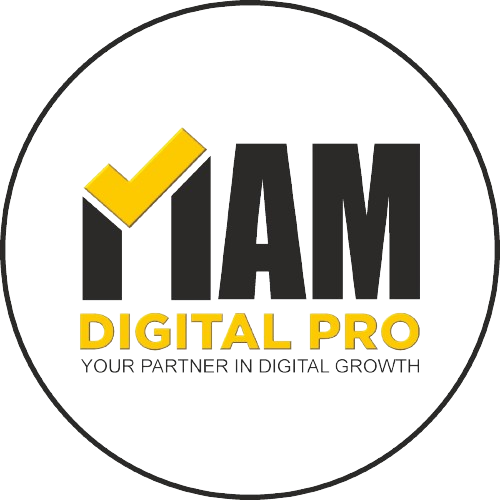Having a robust social media presence is essential for businesses today. A social media content calendar is a tool to help plan and organize your social media strategy in advance. It lets you map your posts, campaigns, and content pillars monthly or weekly.
Creating a social media content calendar is crucial because it enables you to schedule a mix of posts – like images, articles, and videos – based on your goals. It ensures that you have content ready to share consistently and that you are promoting critical initiatives across all channels. A calendar lets you see any gaps you need to fill with engaging posts relevant to your audience.
It also allows you to plan content centered around specific themes that resonate. Having your social media strategy mapped out ahead of time in a calendar is essential for maintaining effective social media marketing. In this post, we’ll look at creating an effective social media content calendar and tips for success on platforms like Facebook, Instagram, Twitter, Linkedin, and more.
Why You Need a Social Media Content Calendar
Here are some key reasons why taking the time to create a social media content calendar is worth the effort:
- It lets you plan and organize posts in advance instead of scrambling to create content last minute. You can draft posts, create visual assets, and ensure everything is ready to go well before your intended post date.
- A calendar helps you balance content types – images, infographics, articles, videos, and more. Variety is excellent for keeping your audience engaged across different platforms.
- You can easily see gaps or holes in your calendar when you map out posts in advance. It allows you to brainstorm creative ideas and fill those date slots appropriately.
- A calendar makes it easier to be consistent with your posting frequency and schedule. You can space outposts appropriately and avoid long gaps between publishing dates.
- It lets you plan content around important dates, events, product launches, promotions, etc. A calendar ensures you always catch all major happenings relevant to your brand and audience.
- Advanced planning ensures you have time to create promotional posts and drum up interest for campaigns before they launch. A timely or adequate promotional strategy can help your results.
- A social media content calendar provides a helpful high-level view of your strategy and makes it far easier to execute your social media marketing effectively and organized.
How to Create Your Social Media Content Calendar
Follow these steps to craft your own tailored social media content calendar:
- Evaluate Your Goals
First, clearly define your social media goals and what you aim to achieve through your channels. It could include goals like:
- Increase brand awareness or followers
- Drive traffic to your website
- Engage with your audience and community
- Promote events, offers, or new product releases
- Generate leads and sales
Your content calendar should help support these goals. Make sure you have them crystalized before moving forward.
2. Determine Content Themes
Next, define the critical content themes and pillars you want to focus on. For example:
- Industry news, trends, and insights
- Product features and case studies
- Company updates and announcements
- Thought leadership and expertise sharing
- Customer testimonials and reviews
- Behind-the-scenes content
List themes and topics that align with your brand messaging and business goals. These will drive the focus of your calendar.
3. Note Important Dates
Look at your company roadmap and note any significant events, product launches, campaigns, partnerships, promotions, conferences, or other dates you need to promote or align content. Add these dates to your calendar as a reference.
4. Review Past Performance
Take a look at your past social media content and engagement. Make a note of which posts got high reach and engagement. Analyze trends around topics, formats, content types, etc., that resonate with your audience. Use these insights to guide what you add to your calendar.
5. Start Mapping Out Posts
With your goals, themes, and critical dates in mind, you can start sketching your calendar! Make a rough monthly outline, plugging in ideas for status updates, relevant re-shares, and promotional posts. Just outline – you can come back later to add details.
- Use a Template or Content Tool
Dedicated social media calendars and content creation tools can make planning your calendar even easier. Stay organized using templates or tools like CoSchedule, Hootsuite, Buffer, SproutSocial, or Canva.
- Elements to Include
As you fill out your calendar, make sure to include the following elements:
Posting date and time: This may vary based on when your audience is most engaged.
Post caption and keywords: Draft enticing captions tailored for each platform and include keywords where relevant.
Visual elements: You can use Links, images, infographics, or videos that complement your post.
Post format: Photo, text, video, quote graphic, etc. Vary content formats for interest.
Content topic: Select a theme or pillar your post relates to.
Campaign tie-in: Show how the post helps promote a specific initiative, product, event, etc.
Notes section: Additional details for context. Track approval status.
Tips for Different Platforms
When drafting your social media calendar, keep in mind the best practices for engagement on each platform:
- Mix text, image, and video posts
- Post at least 1-2 times per day
- Use relevant hashtags and tag other brands/pages
- Go Live or create Facebook Stories to drive engagement
- Promote engagement by asking questions and prompting shares in your captions
2. Twitter
- Post 3-5 times daily with a mix of original tweets and re-shares
- Use relevant hashtags and tag influencers or brands
- Include images and videos to boost engagement
- Run regular Twitter Polls to spark discussion
- Tweet about trending topics related to your industry
3. Instagram
- Post high-quality photos and videos showcasing your product/service
- Engage your audience with Instagram Stories polls, questions, and location tags
- Use a mix of Instagram posts and Instagram Reels
- Partner with influencers and other brands for cross-promotion
- Use strategic hashtags related to visual content themes
4. YouTube
- Create a regular schedule for high-quality video content
- Join in trending challenges, vlogs, and hashtag campaigns
- Promote videos on other social channels to maximize viewership
- Engage viewers by responding to all comments on videos
- Provide value through tutorials, product demos, tips, and tricks
5. Pinterest
- Create eye-catching PIN images for all blog posts and recipes
- Organize content into neatly labeled boards
- Cross-promote Pins through social channels like Facebook and Twitter
- Engage other Pinners with likes and comments
- Use relevant keywords in Pin descriptions to improve discoverability
Conclusion
Investing the time upfront to craft a tailored social media content calendar provides immense value. It lets you plan an effective social media strategy that reaches your audience while supporting key business goals and promotions.
Be sure to review and update your calendar based on performance regularly. Please pay attention to engagement levels, tweak topics as needed, and continually refine them. Consistent planning and effort will lead to social media success!
FAQs
Q1: What is a social media content calendar, and why is it important?
A social media content calendar is a tool to plan, organize, and schedule your social media posts in advance. It is important because of:
- Ensures consistent posting and avoids gaps
- Mixes up your content types and formats
- Allows promotion of campaigns before launch
- Saves time over creating last-minute posts
- Provides tracking for what’s working versus not
- It gives you an overview of your entire strategy
In short, a content calendar leads to greater efficiency, organization, and ultimately better performance and engagement. It’s an essential component of social media success.
Q2: What content should I include in my social media calendar?
Your calendar should include a diverse mix of content types like:
- Industry news and articles
- Blog posts and guides
- Pictures and videos
- Stories and Reels
- Campaign promotions
- Testimonials and reviews
- Infographics and stats
- Special offers or giveaways
- Holiday posts
- Event Coverage
Aim for variety to keep your audience engaged across different platforms.
Q3: What’s the best way to organize a social media content calendar?
Use a calendar template or online tool to map your monthly posts in a calendar grid. As a result, you can easily see your overall strategy. Include dates, content format, captions, hashtags, and themes for each planned post.
Q4: When should I schedule social media posts for maximum engagement?
The best times to post vary by platform and audience, but early morning and evening increase engagement across the major platforms. Use your analytics to identify when your followers are most active online—schedule content for those high-traffic periods.
Q5: How often should I review and update my social media calendar?
Review your calendar weekly to adjust dates, fill gaps, and add new ideas. Analyze engagement data monthly and tweak topics or formats that aren’t performing well. Set aside time quarterly for an in-depth calendar review to ensure it aligns with your latest strategy.

